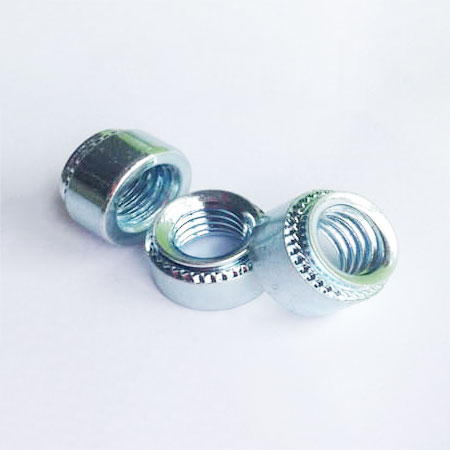The production of stainless steel Through Hole Nuts is a highly specialized process that requires precision, advanced technology, and stringent quality control measures. From the selection of raw materials to final inspection, every step is crucial to ensure these fasteners meet the standards for durability, strength, and reliability across various applications.

The journey of producing high-quality through hole nuts begins with selecting the right stainless steel grade. Popular choices include 304, 316, and 410 stainless steel, depending on the required level of corrosion resistance, tensile strength, and environmental compatibility.
304 Stainless Steel Nuts: Known for excellent corrosion resistance and general-purpose applications.
316 Stainless Steel Nuts: Offers superior resistance to chlorides, making them ideal for marine and chemical environments.
410 Stainless Steel Nuts: Known for their hardness and high strength, suitable for mechanical applications.
The raw material must pass strict inspections for chemical composition and mechanical properties before proceeding to the next stage.
The stainless steel is first cut into the required size using high-precision machinery. This ensures minimal material wastage and consistent dimensions.
The cut pieces are heated and forged into the basic shape of the nut. Forging increases the material's strength by aligning its grain structure, ensuring that the stainless steel nuts can withstand high levels of stress.
Threading is performed using advanced CNC machines or rolling methods. For through hole nuts, precise threading is critical to ensure smooth assembly and secure fastening.
To enhance durability, the nuts undergo surface treatments such as passivation, which removes surface impurities and improves corrosion resistance. Some nuts may also receive coatings like zinc or nickel plating, depending on specific application requirements.
Each through hole nut is measured against strict dimensional tolerances to ensure it fits perfectly in the intended assembly. Advanced tools like coordinate measuring machines (CMM) are often used for this purpose.
Threads are inspected using thread gauges to verify their accuracy and consistency. Any deviation could compromise the fastening ability of the nut.
Tensile Strength Testing: Determines the nut's ability to withstand mechanical forces.
Hardness Testing: Verifies the nut's resistance to deformation under load.
Corrosion Resistance Testing: Ensures the material performs well in specific environmental conditions.
A final visual check ensures there are no defects, such as cracks, burrs, or uneven finishes, on the stainless steel nuts.
After passing all quality tests, the nuts are cleaned, packed, and labeled according to customer specifications. Proper packaging ensures the nuts remain in pristine condition during transportation and storage.
The production of Stainless Steel Through Hole Nuts involves a series of meticulously controlled steps, each designed to uphold the highest standards of quality. From selecting the best raw materials to ensuring precise threading and thorough inspection, every detail matters. These manufacturing practices ensure that stainless steel nuts meet the diverse needs of industries such as construction, automotive, and marine.